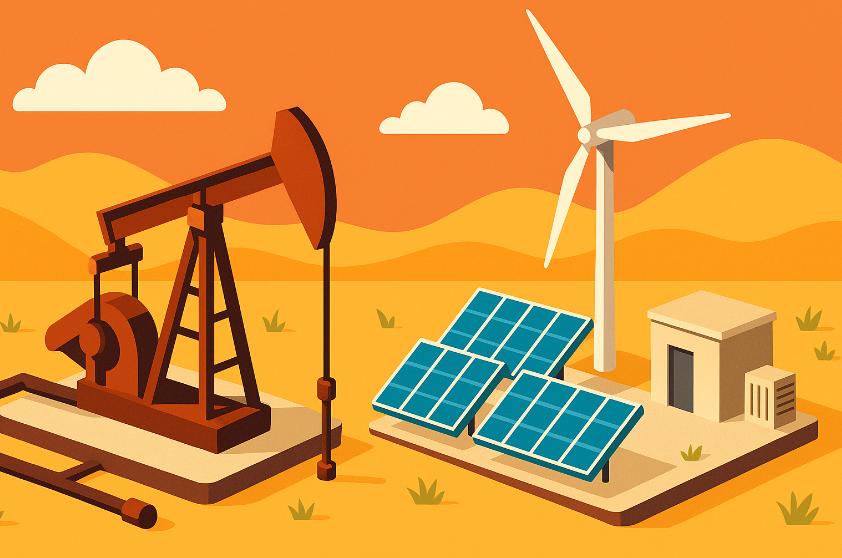Turning Wells into Windfalls
It’s not exactly intuitive to look at a decommissioned oil site and think “solar farm,” but then again, we once thought powdered wigs were a good look. Many of these sites, especially in sunny or windy regions, are prime candidates for renewable energy development. They’re already cleared, have road access, and in many cases, have some existing infrastructure that can be repurposed.A wind turbine where a derrick once stood isn’t just poetic—it’s practical. And solar panels don’t complain about the ghosts of hydrocarbons past. Transitioning these sites to renewable use creates local jobs and restores tax bases in communities left behind by fossil decline.
Parks, Trails, and Dusty Picnics
Another approach gaining momentum: turn that former well pad into a picnic pad. Decommissioned fields, after thorough environmental remediation, can be repurposed as public spaces. Think mountain bike trails where service roads used to rattle with rig trucks. Campgrounds where flare stacks once hissed.It’s not just about slapping a bench on the site and calling it a day. Done right, these conversions require collaboration with local stakeholders, environmental scientists, and folks who actually go outside recreationally. But the results can be transformative. Communities regain pride, wildlife returns, and school field trips get a little more interesting than just the local water treatment plant.
Cleanup Isn’t Glamorous, but It’s Essential
Before we start waxing poetic about windmills and barbecue pits, let’s talk remediation—the decidedly unsexy but absolutely critical process of making these sites safe. Depending on how the site was managed (or mismanaged), the cleanup might involve removing contaminated soil, treating groundwater, sealing wells, and assuring that no one’s going to dig up something they shouldn’t.Environmental regulations vary by region, but the trend is toward increasingly strict standards. That’s not bureaucracy for the sake of red tape—it’s a line drawn to protect human health, ecosystems, and nearby property values. In some places, operators are required to post bonds or other financial assurances to ensure sites aren’t simply abandoned like a bad Tinder date.
Thinking Inside the Box (of Retail, That Is)
Redevelopment doesn’t always mean nature trails and turbines. Some sites, especially those near towns or transit corridors, can be converted into commercial or industrial zones. Think warehouses, logistics hubs, or yes, even coffee chains whose menu boards contain more adjectives than the average short story.Because the land has already been developed once, it’s often faster to get permits for reuse than for pristine greenfield projects. And while zoning changes can be a bureaucratic hairball, municipalities are often surprisingly supportive when you show up with plans that bring tax revenue and employment opportunities.
Creative Approaches and Oddball Ideas
Not every site screams “solar” or “Starbucks.” Some lend themselves to more eclectic reuse—think art installations, film sets, drone-testing zones, or even off-grid training grounds for emergency responders. If you’ve got a weird patch of flat land with decent road access and no lingering methane leaks, someone, somewhere, will probably want to do something niche with it.One former well site was converted into a community science park where students monitor soil and water quality. Another became a livestock research station, apparently solving the eternal mystery of whether goats really will eat anything (spoiler: nearly). The point is, creative reuse isn’t just possible—it’s increasingly necessary.
Economic Perks of Repurposing
Beyond the warm fuzzies of environmental stewardship, there’s a strong financial argument for repurposing these sites. Remediated land can regain value on the property market, contribute to local tax rolls, and generate entirely new streams of income. This isn’t some charitable side hustle—it’s an investment strategy.For local governments, every site brought back into productive use means less blight and more budget flexibility. For private owners, it can mean turning a long-term liability into either a sellable asset or a source of recurring revenue. In the right circumstances, site reuse can even attract grant funding or public-private partnerships—especially for projects involving clean energy or public access.
Oilfields of Dreams
There’s something deeply satisfying about turning a problem into a possibility. Decommissioned oilfields, once symbols of industrial extraction, can be reborn as testaments to ingenuity and renewal. It won’t happen overnight, and it certainly won’t happen without investment, regulation, and—let’s be honest—a whole lot of paperwork.But the shift is real. From turbines spinning in the plains to dog parks where roughnecks once roamed, these sites are proof that energy isn’t the only thing that can be extracted from the land—so can new life, new use, and occasionally, a decent espresso.
Article kindly provided by taqenergy.com

